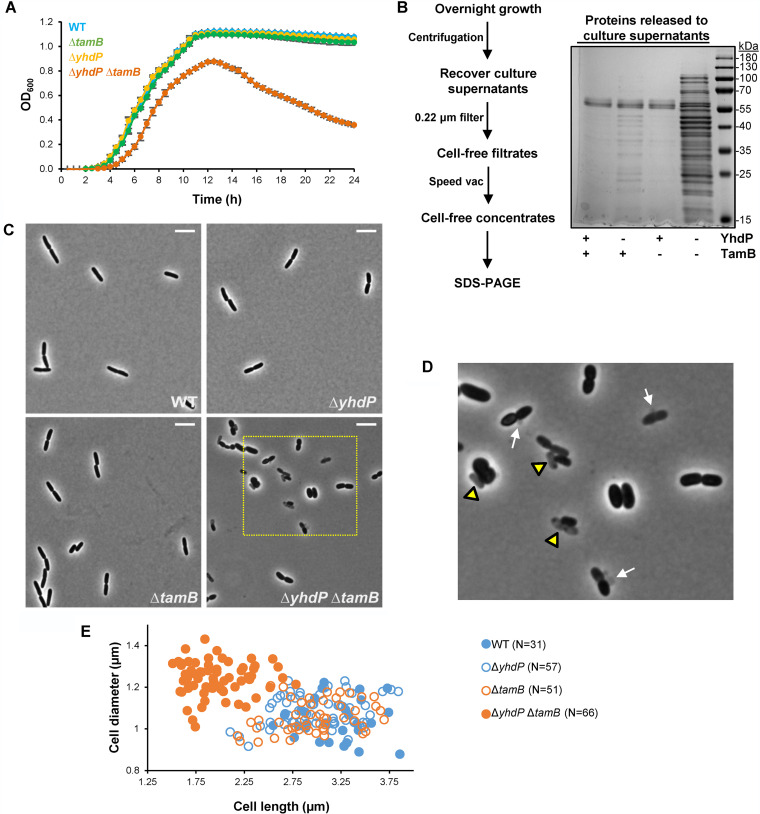FIG 2.
Combined loss of TamB and YhdP synergistically causes lysis and alterations to cellular morphology. (A) Cultures of the ΔyhdP ΔtamB mutant showed increased lysis, as demonstrated by a drop in optical density (OD600) when growing in LB at 37°C. Data represent the averages and standard deviations from three biological replicates. (B) On the left, scheme showing the experimental strategy to obtain cell-free culture supernatants from overnight cultures grown in LB at 37°C. On the right, SDS-polyacrylamide gel in which proteins were stained with Blue-BANDit after electrophoresis. Gel shown is representative of at least three independent experiments. (C) Phase-contrast microscopy of cells growing in LB at 37°C revealed that loss of either YhdP or TamB alone does not alter cell morphology, but loss of both factors leads to morphological defects. White scale bar (top right) represents 5 μm. Yellow rectangle marks area enlarged in panel D. (D) ΔyhdP ΔtamB cells exhibit pleiotropic morphological defects: decreased length and increased width, membrane vesiculation or blebbing (white arrows), and increased incidence of lysis (yellow triangles). Images are representative of at least three independent experiments. (E) Cells lacking both YhdP and TamB grow shorter and wider than the wild type and their respective single-mutant parents. The number of cells undergoing constriction after septation (with shape of the number 8) was observed with phase-contrast microscopy, and images were processed with ObjectJ (85) to measure cell length and width of each daughter cell undergoing constriction during exponential growth in LB at 37°C.

